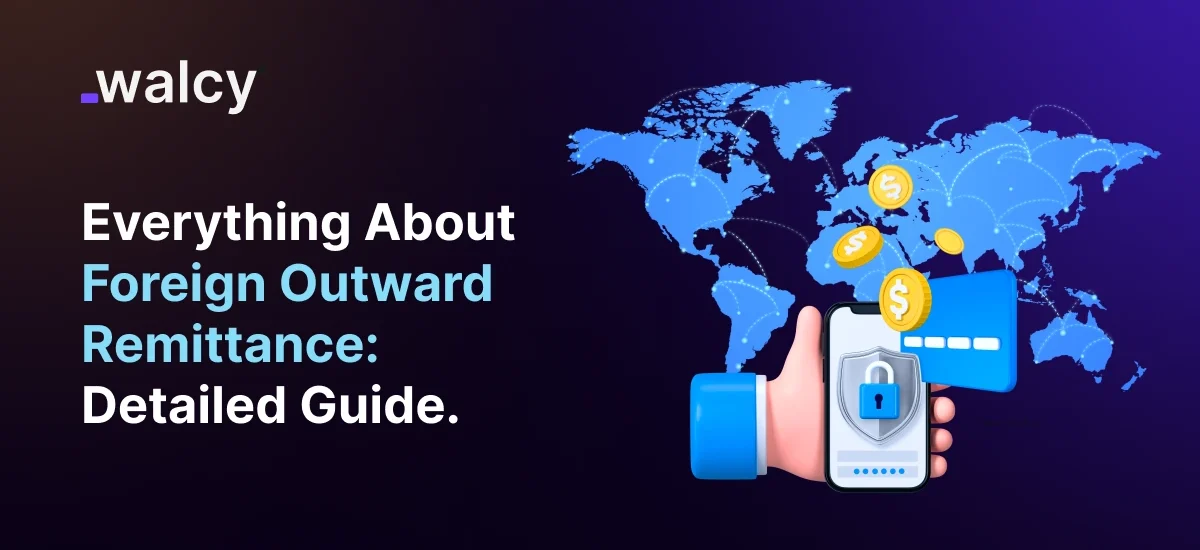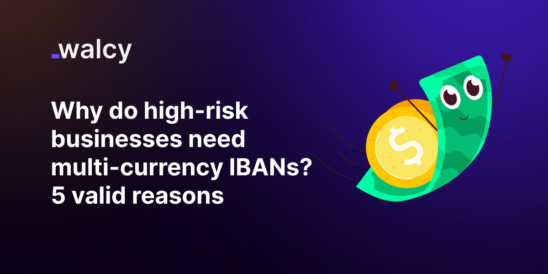Foreign outward remittance is the process of transferring funds from one country to another, usually for reasons that could pertain to business, education, family support, or investments. This practice keeps being vital for international trade and personal transactions, as it increases the flow of money across borders.
Understanding the intricacies of outward remittance helps individuals and businesses manage their finances better.
What is Foreign Outward Remittance?
Foreign outward remittance is the process of transferring money from one country’s bank account to another country’s bank account. It has a quintessential role in facilitating international trade, supporting family members located abroad, financing education, or making investments in foreign markets.
Not just a simple process of moving money, it is about finding your way around a maze of international regulations and financial protocols put in place to make sure the funds are moved around securely and legally. Every transaction is carefully monitored to avoid illicit activities like money laundering and to ensure the integrity of the world’s financial systems.
Prepaid expenses vary from paying for goods and services purchased abroad to investing in foreign-based assets or supporting family members living abroad. Some businesses rely on outward remittances when there is a need to pay bills due to international suppliers. At the same time, individuals might use them to cover tuition fees, medical expenses, or real estate investments abroad.
Regardless of the purpose, understanding the legal requirements and associated costs with foreign outward remittance is very important to make this transaction efficient and according to international financial standards.
How Does the Foreign Outward Remittance Process Work?
The outward foreign remittance process is well-organized, which guarantees safe money transfers from one country to another. The process includes a series of steps, where each is carried out for compliance with international regulations and securing the transaction. Businesses and individuals can manage outbound remittances more skillfully if they are aware of these processes.
Initiation:
This is where the sender initiates the remittance process by having the recipient’s account information, like the recipient’s name, account number, and purpose of transfer, mailed to his bank. This step is important to ensure that the funds go to the right account and that the transaction meets the requirements of the law.
Verification:
After the initiation, the bank proceeds with the verification process. This includes the identity of the sender and whether or not the proposed transaction qualifies under all the local rules and regulations concerning compliance. Verification is done to ensure that fraud can be kept at bay to make sure that remittance is going to be legitimate.
Read about: International Payment Fraud: Ultimate Guide For Businesses.
Conversion:
The money from the sender, following verification, is converted into the local currency of the recipient at the prevailing exchange rate. This is quite an essential stage since it has been indicated here what amount the receiver would get. The exchange rate fluctuates with market conditions, which in turn affects the overall cost of remittance.
Transfer:
The funds are transferred after the conversion is complete, through a network of banks, known as correspondent banks, which assist in facilitating the international transfer. Depending on the remittance method chosen and the countries involved, it can take anywhere between a few hours to several days for the money to reach the recipient’s account. This large variability again shows that for speed, there is most definitely a need to select the right service provider.
Forex Remittance: Understanding Currency Exchange
Forex remittance deals with the conversion of domestic money into foreign currency, for transfer. As seen above, the rate of exchange is an important consideration because it forms the basis for ascertaining the ultimate amount that will be received by the beneficiary.
Often, banks and other financial institutions that deal in this area make a markup on this rate of exchange, thus affecting the total cost. Understanding such costs, coupled with comparing various rates from different providers, can save money.
The changes in the foreign exchange marketplace can further mean that at different times, different rates of exchange can be produced, adding another key component of timing to the element of the remitters. A good rate of exchange can hugely build up the amount that the eventual receiver would get, which, when the other way around, means loss of funds to the recipient during conversion.
Individuals and businesses should, therefore, closely follow the trend of the exchange rate and seek out tools or services to enable them to lock in rates or ensure better deals on currency conversions. Proactivity and being informed about forex remittance will thus enable the remitter to optimize his or her transaction and ensure that he or she gets the most value for his money.
Read about: Bank Remittance In 2024 | How It Differs To Bank Transfer?
Outward Remittance Charges: What You Need to Know
The charges for outward remittance depend considerably on the method employed, the amount transferred, and the service provider. Common fees include:
Transfer Fees:
Many times, a fixed amount or based on the percentage of the total amount transferred is paid to the bank or remittance service for the processing of the transaction. The fee structure amongst various providers can be very different; hence, comparison among them is highly essential to find the most economical option.
A few providers may offer promotional rates or charge lesser fees if the transfers exceed the limits, which makes it all worth the time to research different options before sending money.
Exchange Rate Markup:
This refers to the margin between the market exchange rate and that of the provider. Financial institutions are charging to cover costs and profit margins through a markup that may see a huge reduction in the amount that the recipient gets. It’s always good to inquire about the applicable exchange rate and how it comes out against the market rate to understand the true cost of the transaction and make informed decisions.
Intermediary Bank Fees:
These are the fees deducted by intermediary banks that allow the flow between sending and receiving banks but are commonly referred to as correspondent banks. Such may vary based on the banks and the countries where the sender and the recipient are.
It is of essence to take note that any intermediary fees are taken off, in that they eat into the amount expected to be received by the beneficiary factor further complicating the already complex issue of transparency in remittances.
It is very important to understand these charges, as many times people fall prey to some unforeseen cost deductions and the recipient gets less than what is being sent. Understanding various fees for outward remittance will help individuals and businesses make wiser decisions while choosing an appropriate service provider for their needs.
You shall like: International Payment Fees | The Essential guide.
Inward Remittance vs. Outward Remittance
The term inward remittance can be explained as the receipt of money coming from abroad to be availed in foreign currency or for any other financial purpose. These may be through bank transfers, wire services, or remittance companies.
Typically, inward remittances depend on the country to which the money will be sent and their prevailing regulations that could affect reporting requirements and purposes for which the funds received are allowed to be utilized. Understanding these regulations becomes crucial for compliance, as well as for maximizing benefits to be accrued from such incoming transfers.
Conversely, an outward remittance is a process of sending money from one country to another, very often for such a case as a payment for goods, services, investments, or familial/personal support. This is governed by varying sets of rules and limits, especially concerning foreign exchange management and permissible purposes of transactions.
While both inward and outward remittances have their functions and places in the world of finance, the difference in their regulatory frameworks and procedural nuances calls for caution on the part of individuals and businesses who engage in these processes as a means to ensure compliance and efficiency in international transactions.
You shall Love: Know Everything about Foreign Inward Remittance Certificate
Conclusion
Foreign outward remittance helps to settle international financial transactions that range from personal or business purposes to investment in different ventures. It is related to various manners of charges, currency exchange issues, and regulatory frameworks, to identify a few, and therefore, understanding the same would help individuals and businesses to minimize loss and maximize their activities of outward remittances.
In other words, remitters can make intelligent decisions to ensure money reaches recipients in the best possible manner while understanding the differences that distinguish inward from outward remittance, along with the costs included. Knowing the difference between foreign outward remittances will play an important role even in a regularly connected world.
Read about: All About Overseas Payments (2024): Comprehensive Guide
FAQs
What are the documents required for outward remittance?
You require identification documents, a PAN card, bank account details, and a remittance form. Additional documentation on the source of funds will be needed where the amount of remittance is higher.
Can I remit money abroad for any purpose?
No, remittances can only be for permissible purposes as outlined in guidelines under FEMA. Activities related to prohibited uses include gambling, lottery, and those that are illegal in India.
How can I reduce the charges for outward remittance?
Service providers need to be compared for the best effective exchange rates and minimal fees. Web-based platforms are also another alternative that needs to be put into consideration. Also, consider multiple, small remittances for cost reduction.
Do follow us on Facebook and LinkedIn, to stay connected with us.



